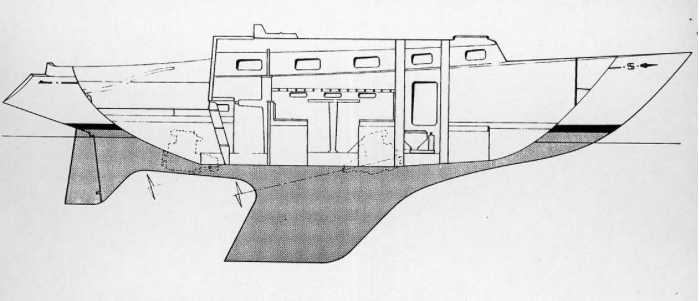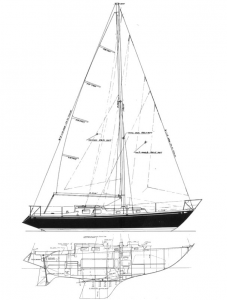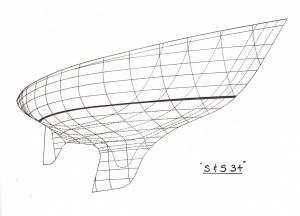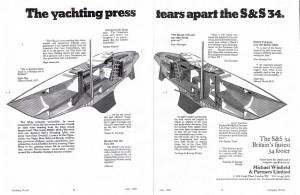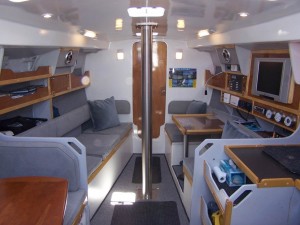Sea kindliness and the ability to sail close to the wind in a blow are just two great attributes of this large-hearted yacht
Nardi’s Nods – By Federico Nardi of Cantiere Navale Dell Argentario. Translated by James Robinson Taylor
Of all the Sparkman and Stephens production yachts, the S&S 34 has become the most celebrated and perhaps the most successful. The boat raced successfully, quickly notching up race victories – including the future British prime minister Ted Heath’s Morning Cloud winning its class in the Sydney Hobart in 1969, before it became the boat of choice for solo circumnavigation attempts.
Several versions were built by yards around the world. The English version differed in having a slightly raised doghouse, while the Australian version (built by Swarbrick Brothers) has an uninterrupted cabin trunk. A later Mark II version has an updated keel and rudder-skeg configuration. The Aquafibre hulls were often finished by other yards. Some were exported to the US as the Palmer Johnson 34. They were also built in Denmark as the Sagitta 35 and in Italy as the Impala 35.
The boat has a remarkably modern shape for a design conceived in 1967. Looking down from above, the hull has a definite diamond shape with a fine bow and a narrow stern. The lines show a short waterline, long overhangs, generous tumblehome and, for its era, a relatively high freeboard. Below the waterline is a short fin keel, with nearly all the ballast right in the middle of the boat and a skeg-hung rudder quite far aft.
The S&S 34 has a relatively tall masthead rig, with a high aspect mainsail and an enlarged foresail, a configuration that became popular in racers in the years to come. In all, a very innovative configuration for its day.
Down below, the headroom in the standard Australian cabin is 6ft 1in which tapers to an inch lower at the main bulkhead. There’s a sea-going quarter berth on port, with a navigation station slightly forward. To starboard is the galley. Hanging lockers and a head are forward of the saloon and there is a rather tight V-berth at the forepeak with headroom of 5ft 10in.
Over 40 years on, the S&S 34 is still a quick boat. The hull is easily driven and only 20hp is required to drive the boat at hull-speed. When introduced the S&S 34 was regarded as having exceptional speed to windward and in heavy weather. Even today she is hard to beat to windward in more than 10 knots, in fact owners have reported throwing in tacks of 80 degrees. Her 50% ballast ratio results in a stiff boat, with the first reef taken at a hefty 25 knots of wind. As she heels, the waterline length increases significantly.
In my early 20s a friend and I took our Impala 35, which we raced and cruised in the Tuscan Archipelago, across the Atlantic to the Caribbean. Sure of being aboard a large and seaworthy boat, and in those days 10m was long and safe, we wandered about the islands, with the pleasurable sensation of feeling at home in our own shell. Only today, once again cruising with an S&S 34 after years of sailing modern-day boats, have I rediscovered the magic of an extremely easy-going and large-hearted boat, forgiving mistakes and rough treatment, robust in every detail, and (sea state permitting) not needing to be steered when beating to windward.
To buy such a timeless icon of elegance, for 20 to 25,000 Euros, fenders included, should be enough. ★
S&S 34
LOA 33ft 6in (10.21m)
Beam 10ft 1in (3.07m)
Draught 5ft 10in (1.78m)
Sail Area 484 sq ft (44.96m2)
Displacement 9195lbs 4171kgs


